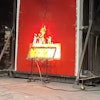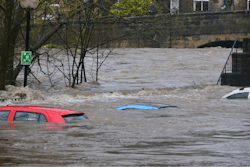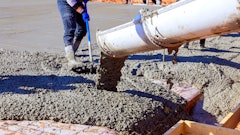
World of Concrete 2014 hosted a forum on concrete home construction that underscored rising cost of property loss resulting from natural disasters, suggesting it is the result of softened building codes.
Under the theme “Building to a Higher Standard: Resilience in Residential Construction,” the program shared Property Casualty Service numbers that show losses due to thunderstorm, hail and tornado rising nearly six-fold since the 1980s, even as the number of severe storms has remained relatively stable. Tropical storm and hurricane damages have risen twenty-fold, on an even-more-static number of storms making U.S. landfall.
Harmonization of four building codes by the International Code Council in 1994 removed some regional code stipulations and resulted in emphasis on protecting human life, while property protection standards slipped. State/local jurisdictions decide code adoptions; some continue to enforce old codes while other jurisdictions adopt newer codes.
Another reason for the rising cost of damages due to storms is the expansion of development geographically in areas subject to storms and earthquake.
Portland Cement Association President Greg Scott said the PCA has tripled its staff dedicated to working on improving residential codes, but the forum identified the immediate opportunity for positive change contractors have when working with clients to use concrete construction on homes in areas at risk.
Jonathan Smoke, chief economist with Hanley Wood, said his organization defined “Resilient Geographic Areas” as places subject to significant wind and seismic disasters – Wind Zone IV and hurricane-susceptible areas, and counties in Seismic zones 3 and 4. Resilient Construction would need to resist these forces, and it was suggested that concrete offers resilience at appropriate cost to properly protect homes and their occupants.
“Our definition for ‘Resilient Area’ resulted in 1,971 of 3,141 counties in the US (63 percent) being defined as resilient,” Smoke said. Additional analysis of Metrostudy data from counties in Resilient Geographic Areas suggests that:
- 77% of the U.S. population lives in areas with need for resilient homes
- 73% of forecast 2014 single-family-home starts are in resilient areas
- Median incomes and home values are higher in resilient areas
The forum addressed opportunity for concrete to improve the resiliency of homes in areas at risk.
“Concrete structures provide an unparalleled level of safety and protection from a wide range of disasters; whether natural disasters such as tornadoes, hurricanes, earthquakes and flooding; or man-made disasters such as power interruptions and blasts,” said Donn Thompson, PCA director of low-rise buildings. “By its mineral nature, concrete provides both strength and stiffness. This ‘liquid stone’ is inorganic, so it doesn’t burn, rot, rust or become a food source for insects and decay.”
Thompson also pointed out concrete’s resistance to wind-driven debris, water and fire resistance, and versatility as a building material.
Buddy Hughes, now a territory manager in South Carolina for Logix Insulating Concrete Forms, shared with the forum his experience building with insulated concrete forms (ICF) during his 30 years as a licensed contractor.
“Pouring basements with ICF is a no-brainer today, if you’re going to finish the basement,” Hughes said. He said the 25 percent premium a homeowner pays for ICF roughly equals the savings they will get from framing and covering the interior walls of a basement cast in place with removable forms. “But initial cost is the big barrier to going up the walls from the basement with ICF.”
ICF walls cost three to four times the price for stick-frame walls.
“But the homeowner gets that back pretty quickly in energy savings on heating and cooling the ICF home,” Hughes explained, “Making the storm protection a freebie.”
In wind-risk areas like his Carolina home market, he recommends the additional precaution of eliminating gables with a hip roof to further protect the home and its occupants. “And use of closed-attic construction is growing because vented attics work against wind resistance.”
A panel of insulated-concrete-form (ICF) vendors discussed strategies for influencing home materials choices, and it was pointed out that the best window of opportunity for talking with clients about building concrete homes is in the five years following a major storm event.



















